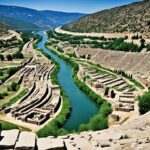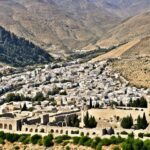Kadesh-barnea, a biblical location mentioned in the Old Testament, holds a significant place in biblical history and narratives. Situated along the border of Edom and Israel, southwest of the Dead Sea, Kadesh-barnea is shrouded in historical and spiritual significance.
The name itself, Kadesh-barnea, meaning “the holy place of the desert of wandering,” encapsulates the essence of this biblical location. From Abraham’s victorious battle with the Amalekites to Hagar’s encounter with the Angel of the Lord, Kadesh-barnea witnessed various key events in the biblical narrative.
As we delve into the history, geography, archaeology, and theology of Kadesh-barnea, we uncover valuable insights into the early pilgrimage journeys and significant stories of faith and disobedience that unfolded within its ancient boundaries.
Key Takeaways:
- Kadesh-barnea is a biblical location mentioned in the Old Testament.
- It holds historical and spiritual significance.
- Located along the border of Edom and Israel, southwest of the Dead Sea.
- Kadesh-barnea witnessed crucial biblical events.
- The exploration of Kadesh-barnea offers insights into pilgrimage journeys and themes of faith and disobedience.
Historical Significance of Kadesh Barnea
Kadesh Barnea holds great historical significance in the context of Israelite history and the events recounted in the Bible. Situated along the border of Edom and Israel, southwest of the Dead Sea, this region played a pivotal role in several key biblical events.
One of the notable events that took place at Kadesh Barnea was Abraham’s victory over the Amalekites, which is mentioned in the book of Genesis. This victory showcased Abraham’s faith and trust in God’s guidance and protection.
Another significant event tied to Kadesh Barnea is Hagar’s encounter with the Angel of the Lord, as recorded in the book of Genesis. It was during her time of distress and desperation in the wilderness that Hagar received divine reassurance and direction.
Furthermore, Kadesh Barnea served as a regular camping spot for the Israelites during their years of wandering in the desert. This location provided necessary resources and rest for the Israelite community as they navigated the challenges and uncertainties of their desert journey.
However, it was at Kadesh Barnea that a momentous event took place, embedded with profound consequences. This was the Israelites’ faithless refusal to enter the Promised Land, despite God’s promises and guidance. Their lack of trust resulted in prolonged years of wandering in the desert.
This pivotal event at Kadesh Barnea also led to Moses and Aaron being denied entrance into the Promised Land, a sobering consequence of their own disobedience. The significance of Kadesh Barnea lies not only in its historical context but also in the theological lessons it conveys about faith, trust, and obedience to God’s commands.
Key Points:
- Kadesh Barnea is historically significant in the context of Israelite history and biblical events.
- Abraham’s victory over the Amalekites occurred at Kadesh Barnea, showcasing faith and trust in God.
- Hagar’s encounter with the Angel of the Lord took place in the wilderness of Kadesh Barnea, providing divine guidance and reassurance.
- Kadesh Barnea served as a regular camping spot for the Israelites during their desert wandering.
- The Israelites’ faithless refusal to enter the Promised Land and the subsequent denial of entry to Moses and Aaron happened at Kadesh Barnea, emphasizing the importance of trust and obedience.
Geographical Location of Kadesh Barnea
Kadesh Barnea occupies a significant position in the Desert of Zin, located along the border of Edom and Israel, southwest of the Dead Sea. It is believed to be situated near or in close proximity to Petra, a historic and archeological city about 100 kilometers east of the commonly depicted location of Kadesh Barnea known as Qudeirat.
As depicted in the map below, the geographical location of Kadesh Barnea in the Desert of Zin places it at a strategic position between Edom and Israel:

Notably, Kadesh Barnea’s close proximity to Petra has led to ongoing research and discourse among scholars in order to determine the precise location of this biblical site. By exploring the geographical context of Kadesh Barnea, we can gain a deeper understanding of its historical significance and the events that unfolded in this remote desert region.
Archaeological Discoveries at Kadesh Barnea
Extensive archaeological excavations have been conducted at and around the potential location of Kadesh Barnea in Petra and its surrounding areas. These excavations have revealed traces of ancient settlements, structures, and artifacts that indicate human habitation during the time period corresponding to the Israelites’ desert wanderings.
One notable discovery is the remnants of a fortified city believed to align with the biblical description of Kadesh Barnea. The city’s defensive walls and architectural features provide insights into the ancient construction techniques and urban planning of the region.
Excavations have also unearthed numerous pottery shards, offering valuable information about the daily life and material culture of the people who resided in the area. These pottery fragments help archaeologists determine the historical timeline and cultural context of Kadesh Barnea.
Additionally, various inscriptions and rock drawings have been found in the vicinity, shedding light on the ancient writing systems and artistic expressions prevalent during that time. These engravings provide glimpses into the beliefs, traditions, and languages of the inhabitants of Kadesh Barnea.
“The archaeological findings at Kadesh Barnea contribute to our understanding of the historical and cultural significance of this biblical site. They deepen our knowledge of the ancient civilizations that once thrived in the region and allow us to connect the biblical accounts with tangible archaeological evidence.”
Despite these significant discoveries, the exact identification of specific archaeological remains as belonging to Kadesh Barnea remains a subject of ongoing research and debate among scholars. The complexity of the archaeological landscape and the challenges of accurately correlating the biblical narratives with the material evidence continue to fuel scholarly investigations.
Theological Themes of Kadesh Barnea
Kadesh Barnea holds significant theological themes in the Bible, emphasizing the importance of faith and obedience. The Israelites’ lack of trust in God’s promises and their disobedience at Kadesh Barnea had profound consequences, leading to their failure to enter the Promised Land and prolonging their desert wanderings.
This biblical account serves as a cautionary tale, illustrating the critical role of faith in fulfilling God’s plans. It highlights the need for believers to wholeheartedly trust in God’s guidance and promises, even when faced with challenges or uncertainties.
At Kadesh Barnea, the Israelites allowed fear and doubt to overpower their faith, resulting in disobedience and a missed opportunity to claim the blessings that awaited them. This narrative encourages readers to reflect on their own faith and obedience, prompting them to trust in God’s faithfulness and follow His commands.
The story of Kadesh Barnea reinforces the eternal principle that faith and obedience are intertwined, with disobedience hindering the fulfillment of God’s divine plans. It reminds believers of the importance of remaining steadfast in faith, even in the face of challenges, and obeying God’s instructions without hesitation.
“And you shall remember the whole way that the Lord your God has led you these forty years in the wilderness, that he might humble you, testing you to know what was in your heart, whether you would keep his commandments or not.”
Lessons from Kadesh Barnea:
- The importance of trusting in God’s promises
- The consequences of disobedience and lack of faith
- The necessity of wholehearted obedience to God’s commands
- The need to overcome fear and doubt with faith
In summary, the theological themes of Kadesh Barnea highlight the essential role of faith and obedience in the Christian journey. Learning from the Israelites’ mistakes, believers are encouraged to trust in God’s promises, remain obedient to His commands, and journey faithfully towards the fulfillment of His purposes.

Key Biblical Events at Kadesh Barnea
Kadesh Barnea was the backdrop for two significant events in the biblical narrative. These events shed light on the Israelites’ faith and obedience, as well as the consequences they faced when they fell short.
“I have given this land to the Israelites. Send some men to explore it. After forty days, their report will determine whether we should move forward or turn back.”
– Moses to the twelve spies before their expedition to the Promised Land
In the first key event, Moses instructed twelve spies to explore the Promised Land and report back after forty days. However, despite witnessing the abundance and fertility of the land, ten of the spies returned with a fearful and faithless report, instilling doubt and unbelief in the hearts of the people. Consequently, except for Caleb and Joshua, the Israelites refused to enter the Promised Land, fearing the inhabitants and doubting God’s promise of victory.
In the second pivotal event, Moses and Aaron, the leaders entrusted with guiding the Israelites to the Promised Land, were denied entrance into it. This verdict was the result of their disobedience to God’s commands at Kadesh Barnea, where Moses struck a rock to bring forth water instead of speaking to it as commanded. Despite their years of devout service and dedicated leadership, their failure to follow God’s instructions cost them the opportunity to step foot into the land flowing with milk and honey.
These key biblical events at Kadesh Barnea highlight the importance of faith, obedience, and trust in God’s promises. The consequences of disbelief and disobedience serve as cautionary lessons for future generations, reminding them of the significance of unwavering faith and steadfast obedience to God’s commands.
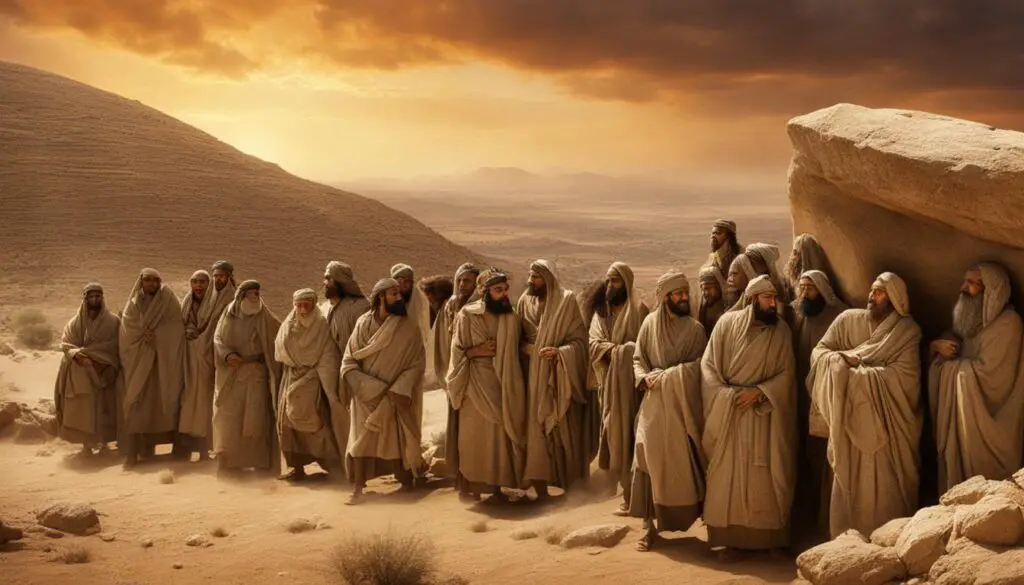
Summary of Key Biblical Events at Kadesh Barnea:
| Key Events | Details |
|---|---|
| The Israelites’ Refusal to Enter the Promised Land | Despite the ten spies’ fearful report, Caleb and Joshua expressed faith, while the majority of the Israelites succumbed to doubt and refused to enter the land of promise. |
| Moses and Aaron Denied Entrance into the Promised Land | Moses’ striking of the rock instead of speaking to it as commanded by God resulted in God’s decision to withhold entrance into the Promised Land from Moses and Aaron. |
Cultural and Religious Practices at Kadesh Barnea
Kadesh Barnea, located in the heart of the desert, held immense cultural and religious significance for the Israelites during their time of wandering. As a regular camping spot, it served as a central hub for their daily routines and spiritual practices.
Although the precise details of the cultural and religious practices at Kadesh Barnea are not explicitly mentioned in the biblical texts, we can glean insights into their way of life through historical and contextual analysis.
Spiritual Gatherings and Worship
At Kadesh Barnea, the Israelites would come together for worship and spiritual gatherings. It was a place where they communed with God, seeking guidance, offering sacrifices, and observing religious rituals.
In their nomadic lifestyle, the Israelites would erect a tabernacle, a portable sanctuary, at Kadesh Barnea. This served as the focal point for their worship, where they sought God’s presence and received divine instructions. The priests undertook their duties within the tabernacle, performing rituals, and interceding on behalf of the people.
Cultural Traditions and Social Life
Kadesh Barnea was also a place where the Israelites engaged in cultural traditions and social life. Here, they would gather for communal meals, celebrate festivals, and engage in activities that fostered a sense of unity and identity as a nation.
The Israelites would exchange stories, pass down traditions, and teach younger generations about their history and faith. It was a time for songs, dances, and storytelling, reinforcing their shared heritage and the covenant with God.
Burial Practices
Additionally, Kadesh Barnea served as a place of burial for the Israelites. Amidst the harsh desert conditions, the loss of loved ones was an inevitable reality. They honored their deceased by providing them with a final resting place at Kadesh Barnea, securing their place in history and ensuring the continuity of their ancestral legacy.
Although the exact archaeological evidence of these practices at Kadesh Barnea is yet to be discovered, the biblical accounts and cultural context give us a glimpse into the cultural and religious practices that shaped the lives of the Israelites during their time at this significant location.
| Key Aspects | Description |
|---|---|
| Spiritual Gatherings and Worship | Communal worship, seeking divine guidance, offering sacrifices, and observing religious rituals at the tabernacle. |
| Cultural Traditions and Social Life | Engaging in communal meals, celebrating festivals, exchanging stories, and passing down traditions. |
| Burial Practices | Providing a place of burial for the deceased, honoring their memory, and preserving ancestral legacy. |
Prophetic and Eschatological Significance of Kadesh Barnea
Kadesh Barnea holds a profound prophetic significance in biblical narratives. It symbolizes God’s judgment and the consequences of unbelief and disobedience. Through the events that unfolded at Kadesh Barnea, the Old Testament illuminates the importance of faith and obedience in fulfilling God’s promises.
In eschatological interpretations, Kadesh Barnea represents a future restoration and the ultimate fulfillment of God’s covenant with His people. It serves as a reminder that even in moments of doubt and rebellion, God’s faithfulness endures and His promises will be realized.
God’s Judgment and Consequences
The story of the Israelites’ faithless refusal to enter the Promised Land at Kadesh Barnea highlights the grave consequences of unbelief. This event stands as a cautionary tale, demonstrating the high stakes of disregarding God’s instructions and doubting His ability to deliver on His promises.
“Because all those men which have seen my glory… have tempted me now these ten times, and have not hearkened… though they see the land which I sware unto their fathers, neither shall any of them that provoked me see it.” – Numbers 14:22-23
This profound act of rebellion resulted in a forty-year period of wandering in the desert, during which the Israelites would bear the consequences of their lack of trust in God.
Future Restoration and Fulfillment
In eschatological contexts, the significance of Kadesh Barnea extends beyond the judgment and consequences experienced by the Israelites. It becomes a symbol of hope and restoration, representing God’s unwavering faithfulness and His commitment to fulfilling His promises to His people.
“For the Lord has comforted Zion; He has comforted all her waste places… He has made her wilderness like Eden, and her desert like the garden of the Lord.” – Isaiah 51:3
Just as God restored the land and the people after their disobedience at Kadesh Barnea, He promises a future restoration and fulfillment of His covenant in the eschatological era.
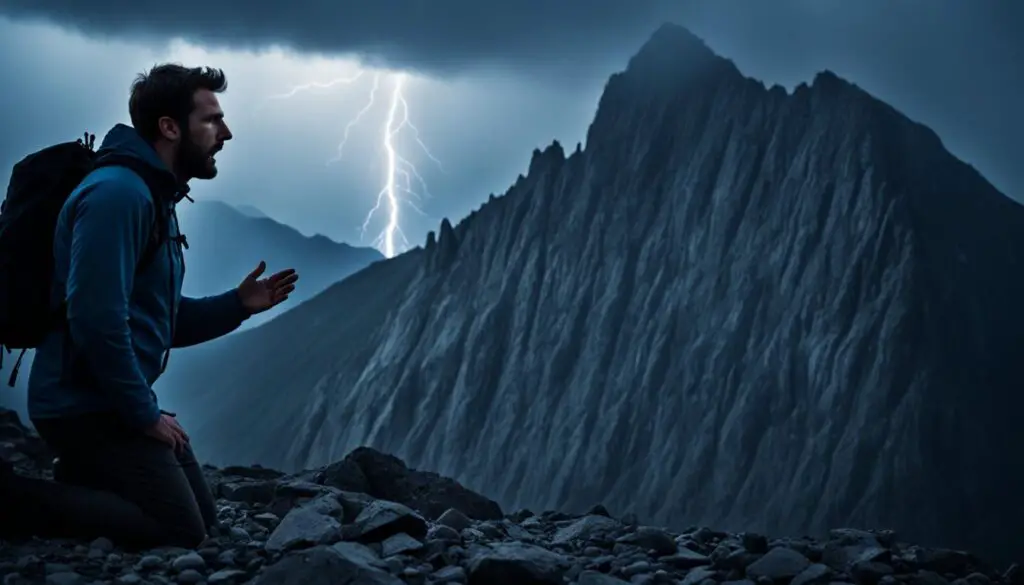
The prophetic and eschatological significance of Kadesh Barnea invites us to reflect on the enduring consequences of unbelief and disobedience, while also pointing us towards a future of restoration and fulfillment in God’s promises.
The Search for Kadesh Barnea
The search for Kadesh Barnea’s precise location has captivated historians and archaeologists for many years. Through extensive historical research and archaeological investigations, scholars have attempted to uncover the true whereabouts of this ancient biblical site. Various proposed locations, including Petra, have been analyzed and evaluated based on biblical records and archaeological evidence, offering valuable insights into the elusive nature of Kadesh Barnea.
Historical research on Kadesh Barnea has relied on a combination of textual analysis and geographical studies. By examining biblical accounts and cross-referencing with ancient maps and texts, researchers have narrowed down potential locations and built a compelling case for their findings.
“Kadesh Barnea’s historical significance and its role in pivotal biblical events spurred a relentless pursuit to locate it. The continuous search for this ancient site adds depth to our understanding of biblical narratives and provides a fascinating glimpse into the historical context of the Israelites’ journey.”
One of the primary challenges in identifying Kadesh Barnea lies in the vagueness and ambiguity of its description in the biblical texts. While there are references to its geographical proximity to Edom and Israel, the exact coordinates remain elusive. This lack of precise information has sparked debates among scholars, leading to multiple proposed locations and ongoing discussions.
Despite the inconclusiveness surrounding the location of Kadesh Barnea, the search continues as researchers uncover new pieces of evidence and refine their methodologies. The combination of historical research, archaeological excavations, and interdisciplinary collaboration offers hope for future breakthroughs in unraveling the mysteries of this significant biblical site.
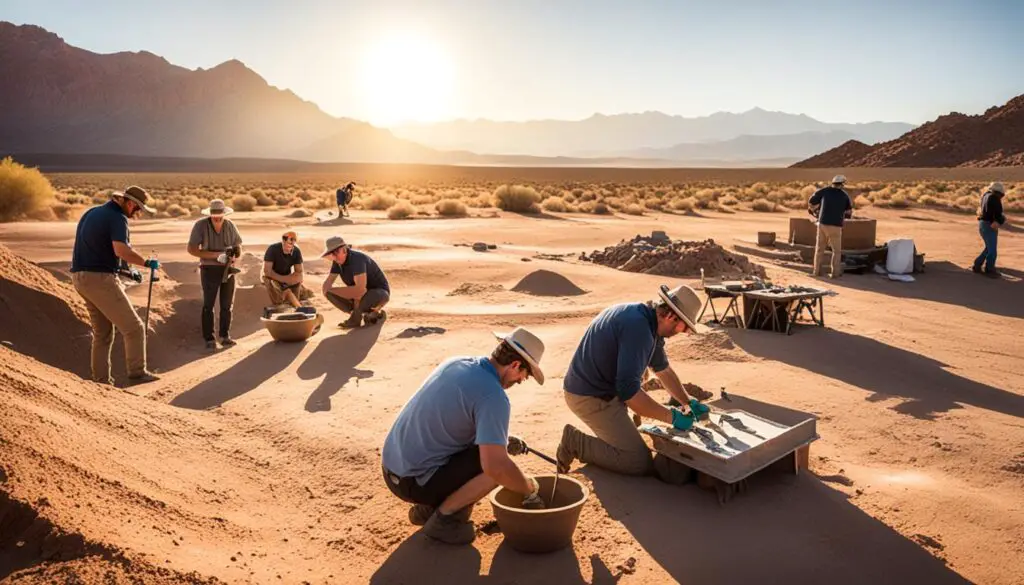
As the search for Kadesh Barnea persists, scholars remain committed to unraveling its historical complexities and shedding light on its true location. The quest to uncover the mysteries of Kadesh Barnea not only enriches our knowledge of ancient biblical times but also reveals valuable insights into the cultural, historical, and religious practices of the Israelites during their desert wanderings. With each new discovery, we inch closer to unearthing the secrets of this enigmatic site and gaining a deeper understanding of its place in biblical history.
Conclusion
In conclusion, Kadesh Barnea holds immense significance in biblical history. As a location mentioned multiple times in the Old Testament, it represents a crucial junction where faith and disobedience intersect. Its historical and geographical context, bordering Edom and Israel southwest of the Dead Sea, makes it a vital site to explore in understanding the events of the Old Testament.
Through its connection to key biblical events, such as Abraham’s triumph over the Amalekites and the Israelites’ refusal to enter the Promised Land, Kadesh Barnea serves as a cautionary tale about faith and the consequences of unbelief. It sparks contemplation on trust in God’s promises and the importance of obedience.
Furthermore, Kadesh Barnea’s influence extends beyond historical and theological realms. It impacts cultural practices, providing insights into the daily lives and religious rituals of the Israelites during their desert wandering. Moreover, its association with prophetic and eschatological significance points to its enduring relevance in biblical narratives and its potential as a symbol of God’s judgment and fulfillment of promises in the future.
In summary, the significance of Kadesh Barnea in biblical history cannot be understated. Its lessons about faith, disobedience, and trust reverberate through generations, inviting us to reflect on our own relationship with God and the choices we make. Exploring Kadesh Barnea deepens our understanding of the Old Testament’s profound impact on our faith and provides valuable insights into the human experience of seeking God’s promises.


